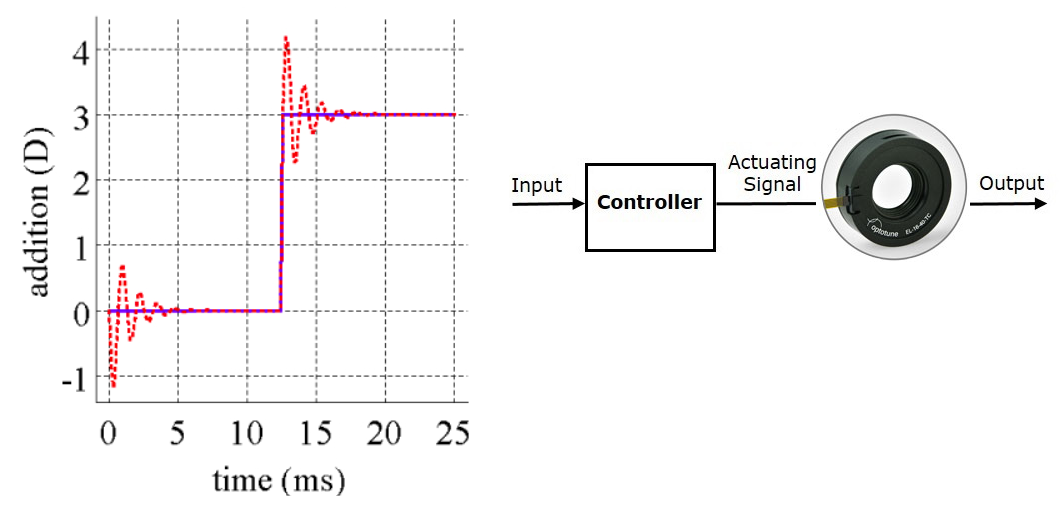Perceptual and physical limits to temporal multiplexing simulation of multifocal corrections

| AUTHORS | |
| JOURNAL | Investigative Ophthalmology & Visual Science July 2019, Vol.60, 6465 (ARVO 2019) |
|
Purpose : Recent simultaneous vision simulators (SimVis) rely on the principle of temporal multiplexing of optotunable lenses (TL): Image components from different foci are superimposed to match the thru-focus optical quality of specific multifocal patterns. If sufficiently fast, the retinal images appear static. The temporal physical and perceptual aspects of temporal multiplexing are experimentally evaluated.
Methods : A custom electronic driver is used to address temporal patterns of optical power onto TLs. Physical limitations (rise time, temporal frequency response, repeatability) of 8 TLs (Optotune) were measured in a custom high-speed focimeter (3800fps). An iterative method was used to compensate dynamic effects (due to inertia, damping). To test the perceptual limitations, high-contrast high-luminance E letters (0.5-2deg) and 2deg natural images were viewed under temporal multiplexing (SimVis 2EyesVision) with square-wave power variations of defocus amplitude (0-3.5D) at varying temporal frequencies (1-500Hz). Just noticeable periodic blur changes were measured on 4 subjects to provide, for the first time, the Defocus Temporal Sensitivity Function (DTSF, perceptual thresholds of defocus amplitude vs temporal frequency), and the Defocus Flicker Fusion (DFF, cut-off frequency for sensitivity to periodic changes in defocus), using a 2AFC task implemented with a QUEST algorithm. Results : The static responses of TLs were linear with input signal (R2>0.99). The dynamic response was linear and highly repetitive (RMSE 0.05D). The settling time varied from 8 to 100 ms across TLs (rise time 1.3-46 ms), with a velocity up to 1.3D/ms. The measured distortions in the temporal response of the fastest TL (RMSE 0.23D at 50Hz) were compensated to improve response fidelity (RMSE 0.07D). The amplitude of the TL response was not reduced for frequencies below 100Hz. Perceptually, DTSF was measured with low uncertainty (STD 0.05D), with similar trends across subjects and stimuli. Maximum DTSF (0.1-0.22D) occurred at ~10Hz. DTSF was <1D for frequencies<30Hz. We found DFF=40Hz. Conclusions : Temporal Multiplexing is compatible with the physical limits of TLs and with the perceptual limits of the subjects. Measurements of the DTSF in subjects revealed that defocus variations at frequencies >40Hz are not perceived. This bandwidth can be achieved by commercial TLs allowing multifocal visual simulators free of temporal artifacts.
|
|
| LINK | here |



